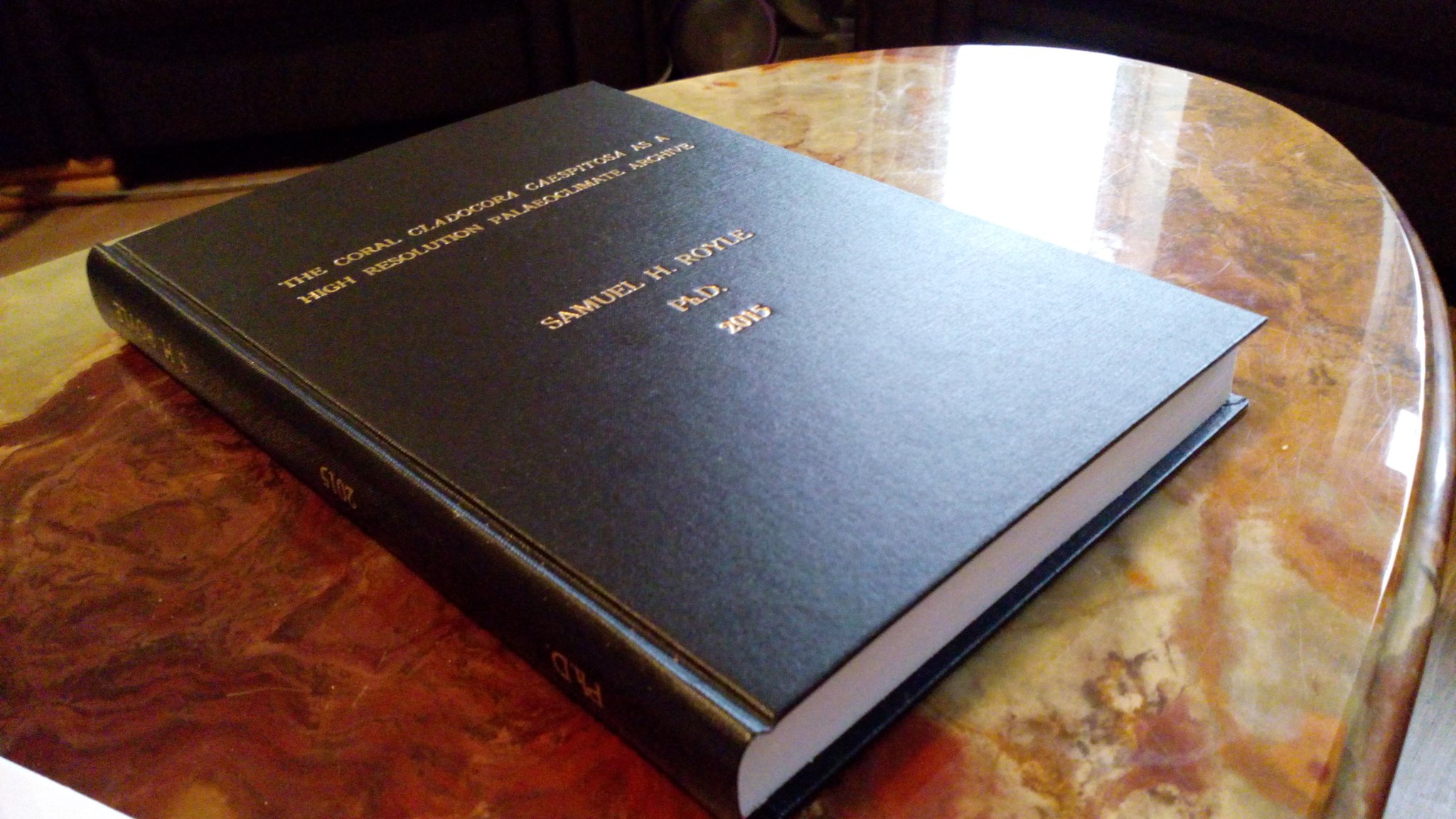My paper based on the third chapter of my thesis is finally published: 'Environmental and diagenetic records from trace elements in the Mediterranean coral Cladocora caespitosa'. This one looks at the analysis of coral skeleton trace element content to attempt to extract palaeoclimate information.
This was the part of the thesis which caused the most problems: the most time spent in method development, the most time swearing at broken machinery and the most time confused and frustrated by meaningless data – over a year of the PhD all in all.
This was the part of the thesis which caused the most problems: the most time spent in method development, the most time swearing at broken machinery and the most time confused and frustrated by meaningless data – over a year of the PhD all in all.
Turning the chapter into a paper proved just as difficult,
we originally submitted the paper in February and I got back to thinking about
isotopes (and working at Go Outdoors) for a few months. It took until July for
the reviewers to get back to us…they’d been busy, very busy ripping apart the
paper – major revisions needed. I received the list of required revisions while
on holiday, read it, swore and wrote off the paper as impossible to fix,
ignoring it for the next month. Luckily (?) my supervisor was less pessimistic
and reckoned it was doable – even if neither of us knew what half the corrections
meant. So we begged an extension and got to it. The reviewers’ main issue was
the total lack of the statistical analysis (I’m not a stats person at all). The
addition of regression analysis, correlation coefficients and frequency
analysis turned the study from a thrown together piece of work into something
resembling a legitimate scientific study, which was accepted at the start of
October. Taking almost 9 months from the initial submission to the final
version being available online.
The full paper can be read here (without a subscription
until the 8th of January thanks to Elsevier’s sharing policy), but
here’s a summary of the main points:
I fired lasers at coral (Cladocora
caespitosa) skeletons: modern ones from Croatia and fossil ones from Greece.
The fossil ones date from the last two interglacials: MIS 5e (108-133 thousand
years ago) and MIS 7a or 7c (186-195 thousand years ago). This allowed us to
measure the trace element content of the coral’s skeleton at a very high
resolution (every 200 μm – about a fortnight’s growth) to look at how it
changed throughout the year. This is important as trace element uptake by
corals is linked to water temperature and therefore could be a good
palaeoclimate indicator.
We found that individual modern corals do indeed record
seasonal variation of sea surface temperature in both their strontium and
magnesium contents. However, every coral analysed demonstrated a different relationship
between temperature and trace element content. This is because each growing
coral is putting an individual, strong and unpredictable biological control (a
vital effect) on the elemental uptake. This means that a universal calibration equation
to link trace element content in this species of coral to temperature is impossible
to produce. This means that we were unable to calculate growth temperatures for
the fossil corals – which is what we were really trying to do.
What we did find which was interesting was that one of the
modern corals contained a massive spike in trace element contents which coincided
with the 2007 wildfires which engulfed a large area of Croatia. This showed
that these corals can be used to inform on any events that cause increased
sediment discharge into the coastal zone – such as fires and floods – which could
allow fossil samples of these corals to be used to discover whether these
events happened more or less frequently during the past interglacials and
thereby giving some indication into the past climate.
In other good news this week the final hardbound copy of my
thesis is now handed in and I’m due to graduate next month – so I finally get
to change everything to say Dr on it.







